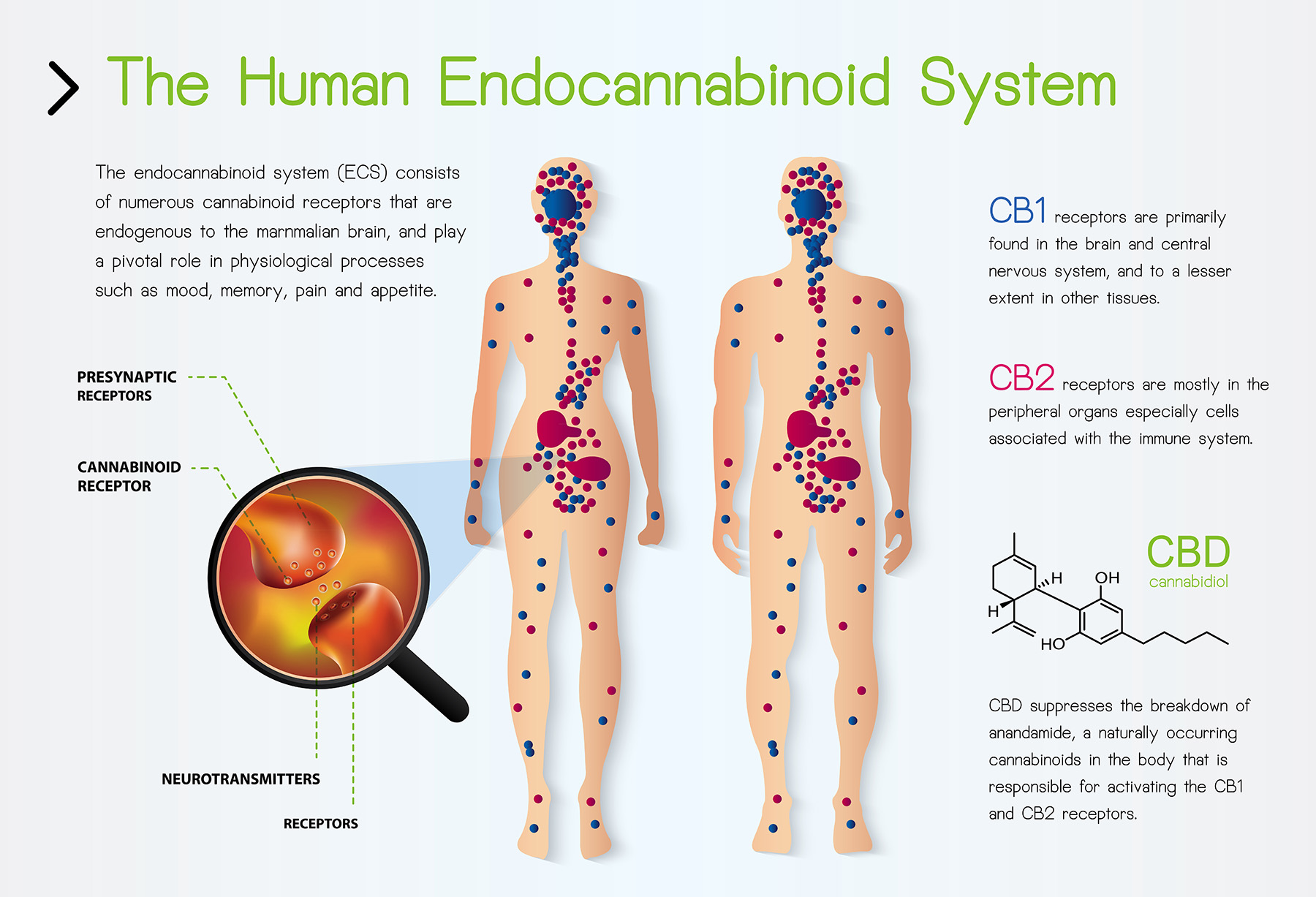The endogenous cannabinoid system has opened new ways for understanding how our bodies work, over the years more research has been conducted in understanding the system. The Endocannabinoid system has two receptors CB1 and CB2. CB1 is the most common type of receptor, it is found in the CNS in areas of the hippocampus, neocortex, and brainstem, as well as other parts of the body such as the eyes and the testes. CB1 receptors are in synapses, which is where nerve cells connect. CB1 receptors interact with substances such as THC which arises from marijuana, synthetic drugs, and natural compounds produced by the body. THC plant contains over 60 different compounds that can activate CB1 and CB2 receptors, the most well-known being ∆9-THC, exposure to THC can lead to various effects in humans such as pain relief, relaxation, and discomfort.3 They’re several consequences that arise from the overuse of THC, some short-term effects are for instance when an individual smokes this, it will pass through the lungs into the bloodstream and from there travel to the brain and other organs. The high that people experience from THC is due to different parts of the brain being activated with the CB receptors and this causes changes that cause altered senses, changes in mood, and alterations in mood.1 Long-term effects include breathing problems for those who smoke it, if used while pregnant this may impact the child’s memory and problem-solving, and overusing THC can worsen symptoms in individuals who experience schizophrenia, paranoia, and temporary hallucinations.2 The CB2 receptor is found in specific parts of the brain, it is mainly related to the immune system, however in the brain CB2 receptors are found mostly in the microglia which are immune cells that play a role in inflammation. In the past, research into the involvement of CB2 receptors in drug addiction was limited. However, there has been a growing body of research shedding light on their roles in alcohol, nicotine, and cocaine addiction.3 Emmanuel Onaivi conducted research on CB2 and was one of the first to find how the receptors link to alcohol addiction, he used mice in this study and found that when given a CB2 receptor activator the mice would drink more alcohol, especially when they were stressed, when the CB2 gene was removed the mice showed a higher need for alcohol and would consume more of it. However, in involuntary drinking experiments, CB2-/- mice drank less alcohol which is an indication that more research is still needed to understand alcohol’s role. Research on cocaine found that Activating CB2 receptors in mice reduced the effects of cocaine and decreased their motivation to use the drug while blocking these receptors reduced relapse after stopping cocaine use, and reduced cocaine’s rewarding effects. Additionally, changes in CB2 receptor levels in the brain were associated with cocaine exposure and addiction development in both mice and rats. Research on Nicotine found that Activating CB2 receptors in rats reduced nicotine intake but increased motivation for nicotine while blocking these receptors had little effect on nicotine-seeking behavior. In mice lacking CB2 receptors, there was less preference for nicotine and reduced motivation to use it, and blocking these receptors decreased nicotine self-administration and withdrawal symptoms.4

What is the Endocannabinoid System and How Does it Work with Cannabis?
1Abuse, N. I. on D. (2019, December 24). Cannabis (Marijuana) DrugFacts | National Institute on Drug Abuse (NIDA). https://nida.nih.gov/publications/drugfacts/cannabis-marijuana
2Cannabis/Marijuana Use Disorder. (n.d.). Yale Medicine. Retrieved April 12, 2024, from https://www.yalemedicine.org/conditions/marijuana-use-disorder
3Kendall DA and Yudowski GA (2017) Cannabinoid Receptors in the Central Nervous System: Their Signaling and Roles in Disease. Front. Cell. Neurosci. 10:294. doi: 10.3389/fncel.2016.00294
4 Navarrete, F., García-Gutiérrez, M. S., Gasparyan, A., Navarro, D., & Manzanares, J. (2021). CB2 Receptor Involvement in the Treatment of Substance Use Disorders. Biomolecules, 11(11), 1556. https://doi.org/10.3390/biom11111556